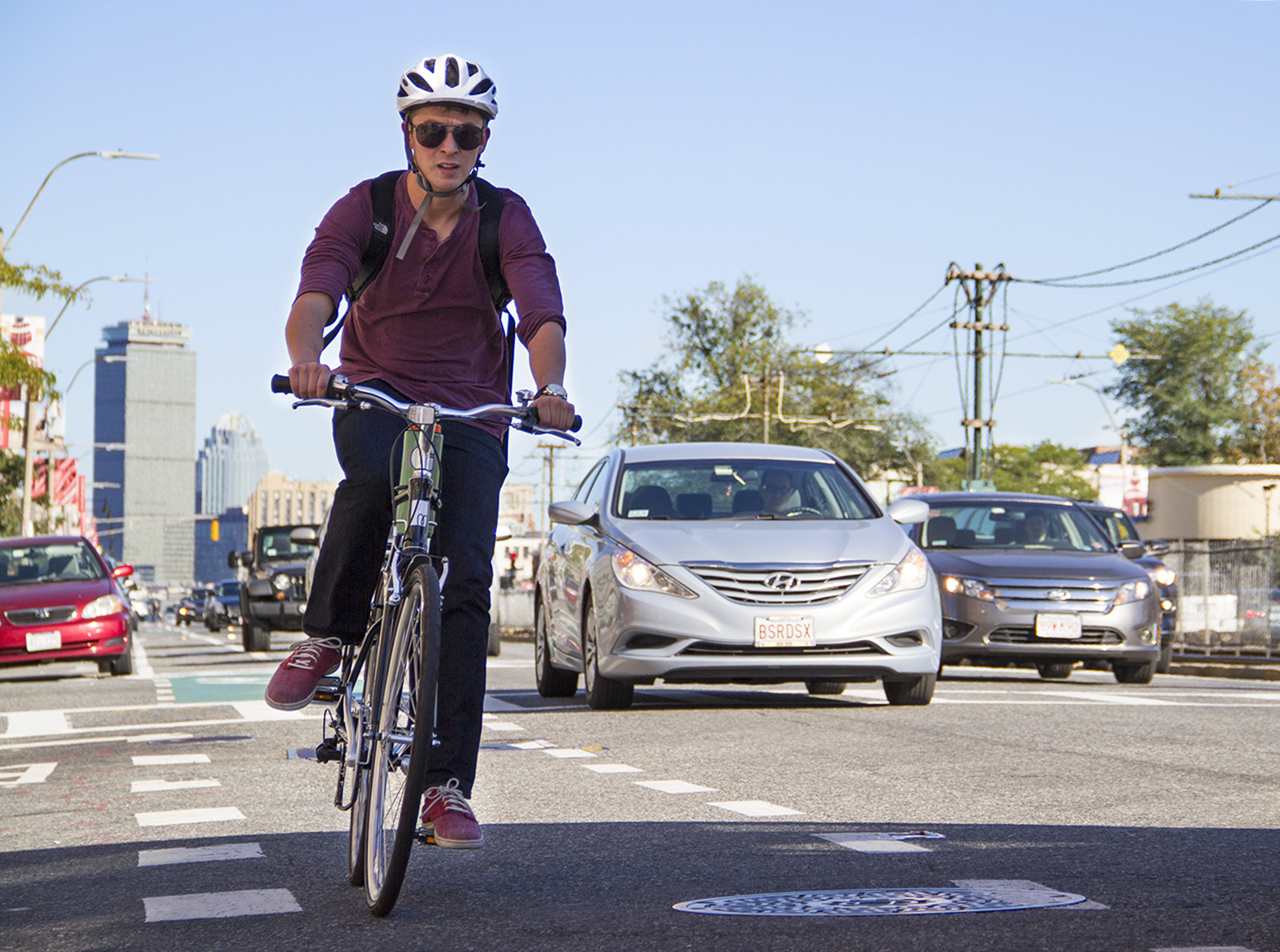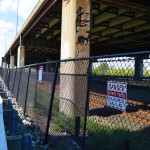
With an urban campus, Boston University is integrated with vibrant city life, but is also faced with the challenge of preparing its thousands of students for the hustle of the city. Particularly, the Dean of Students’ office this year is shining a light on the “different cultural experience” of biking in Boston, Dean Kenneth Elmore said.
Boston, Elmore said, and specifically the strip of Commonwealth Avenue that BU occupies, is “reimagining what road space is supposed to be about” through the integration of automobiles, bicycles, trains and pedestrians.
“You may come from an existence where bikes are the king or the queen of the road. Here it’s not always the case,” Elmore said. “Biking is a very different experience [in Boston], and I want people to be aware of that so that before they put a bike out on the road, they think hard about what’s different about biking here and where they biked before.”
As part of a greater effort to increase bike safety and awareness, the university has released several graphics on social media spreading the word.
Elmore said he hopes BU continues to initiate conversations on the importance of bike safety through varied campaigns and initiatives. His office works with the university’s Bike Safety Committee to spread knowledge about biking policies and maintenance in support of the community’s wellbeing.
Jarrod Clement, a records administrator in the Judicial Affairs office and member of the Bike Safety Committee, said through partnerships with different groups and organizations within and outside of BU, the committee is dedicated to bicycle and pedestrian safety education.
“I believe BU’s continuing bike safety initiatives complement the City’s efforts rather than conform to them,” Clement said in an email. “Our continued helmet giveaway and bike enforcement efforts, coordinated by the BUPD [Boston University Police Department] and in partnership with the Brookline [Police Department], BPD [Boston Police Department], [Massachusetts] State Police and [Massachusetts Bay Transportation Authority] Police [have been effective].”
Jarrod said the committee has distributed a total of 1,532 bicycle helmets since the campaign started in the spring of 2010. Furthermore, the committee will be installing fixed commercial-grade bike pumps, providing tool kiosks in various locations on campus and working on an educational campaign focused on respect towards roadway users by Spring 2016.
“We hope these initiatives offer our community the tools and knowledge to stay safe and improve bike skills,” he said. “While bike thefts remain a point of concern on our campus, we have seen an appreciable rise in the use of good-quality U-locks. Nearly 2,500 of these U-lock shaped hangtags have been placed on bicycles around campus.”
BUPD Captain Robert Molloy said there have been “far fewer” bikes stolen that used U-Locks compared to those that use cable locks. Molloy also said having dialogues with cyclists and reviewing laws and regulations demonstrated success.
“Bike enforcements remind people on bicycles that they are also required to follow all motor-vehicle laws … following those rules and maintain a safe speed and be aware of the pedestrians, it really reduces the risk of any kind of incidents or accidents,” Molloy said.
Often during mornings this year, Molloy said, BUPD officers go to the BU Bridge or stand at posts along Commonwealth Avenue, halting cyclists from Brighton heading to Kenmore Square via East Campus. Officers hand out helmets and remind cyclists to stay informed of the bike policies. Molloy said these efforts make a big impact and send a “more direct and targeted message.”
Navigating the city of Boston can be daring for some, Molloy said, but primarily, cyclists have to be aware of their surroundings at all times throughout their ride.
“People have to understand the way Boston is, with one way streets, and the fact that it can be difficult with traffic congestion and the large volume of pedestrians in the area,” he said. “Sometimes, getting from one part of the city to another requires a little bit of experience. But it’s a great thing and it’s only going to get better.”
Several students said they have noticed a large increase of bikers in the city and on campus. Stephanie Sturm, a freshman in the College of Arts and Sciences, said this calls for further educational action from the university.
“There needs to be a little bit more information about the regulations so that people are more safe on the streets, especially if you’re not used to the city,” she said. “Biking in cities, you need to be accustomed to the pressure or the agitation of the drivers around you.”
Julia Correia, a sophomore in CAS, said she’s been biking on campus and around the city for almost two years. She said that doing so increases the efficiency of her commute from her residence in West Campus to classes and places in the city.
“[People] know how bad drivers are in Boston and pedestrians, they know that bikers are competing with cars so they think it’s just going to be on a worse level for bikes,” she said. “It’s really convenient and it expands your reach a little farther in Boston.”
Liyue Wang, a senior in the Questrom School of Business, said that as cyclists become more aware of their surroundings, it’s also important to make themselves visible to others.
“There’s heavy traffic in Boston so it’s definitely important to focus on making sure that other drivers are aware of your presence so it’ll be safer for you,” Wang said. “BU Police tries pretty hard to spread word on bike safety, like I see posters and flyers about bike safety and they give out free helmets and provide storage for bikes.”




